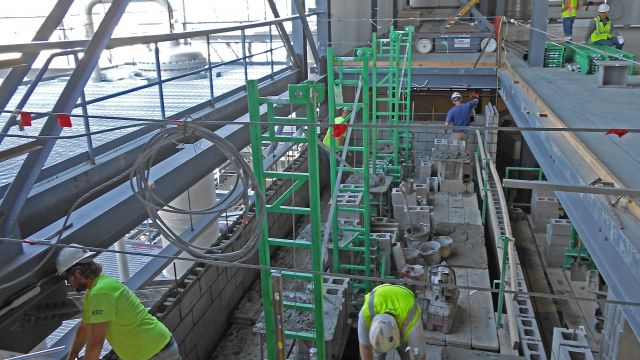Tough spot #47: Elevator shafts
The flexibility of crank-up scaffolding
How many times has this happened to you: You land a multi-story commercial job. You arrive on the site and find that all the steel is up, the floors are poured, it’s 90 feet high, and you’ve got to build block walls around five stairwells and two elevator shafts.
This turned out to be no real problem for Daryl Gamm, project manager for Seedorff Masonry Inc., on a recent job in Fort Dodge, Iowa. “We used our Non-Stop in the shafts, because it’s so easy to set up,” he says. “We used the corner brackets and adjusted the scaffold to fill the entire inside of the shaft.” (See Photo 1.)
The only other option was to use conventional scaffold frames.
Gamm continues, “I couldn’t see how we could make frames fit in some of them. And then, think of all the boards you’d have going 90 feet high and all the board hops. These safety people out here call a meeting if I leave one brace out, but they just walk by the Non-Stop and say, ‘Looks good.’”
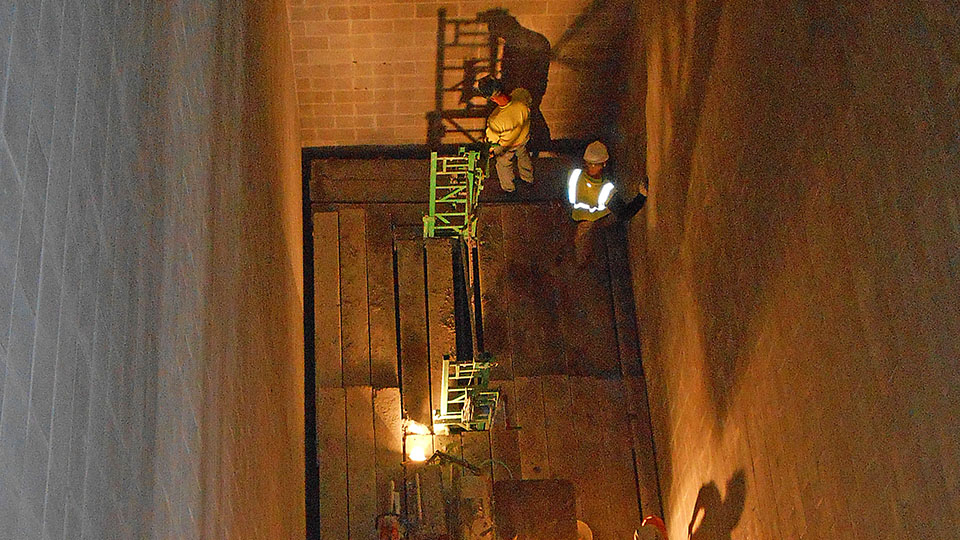
Problem solved with two crane picks
Mike “Whitey” Koontz, a foreman for J. H. Fendorff in Madison, Wis., recently used Non-Stop inside elevator shafts on a power plant 72 feet high.
Koontz says, “We assembled the scaffold 45 feet high on the ground and flew it in with the crane. We planked it and immediately started working. That saved a ton of time over trying to do it with frames, and a lot less expensive crane hours.
“We flew in full pallets of block, and grouted with a Grout Hog with the crane,” he continues. “It’s really easy to crank fully loaded. We flew the rest of the towers in in one shot to take it up to 72 feet high.”
After topping out, Koontz’s crew rubbed the walls down as they lowered the scaffold, taking the tower sections off and stacking them on the platform as they went. The crane lifted the components out in two picks.
To sum up, Koontz says, “It turned out to be a lot more flexible than frames. The learning curve was very short. Jay from the factory told us exactly how to do it. They’ve all got their place: frames, crank-up, and mast climbers. In all these tight spots and on tight job sites, the Non-Stop is a lot more flexible and easy.”
Crank-up scaffolding solves material stocking problem
Judd McDonald, a field superintendent for BMC Contracting out of Colchester, Ill., ran into a similar situation on job with a 36-foot-high stairwell, except it had to be built from the outside.“Using crank-up scaffolding was a heck of a lot easier than using frames,” McDonald says. “We only had access on two sides, and ducking and weaving the blocks around the scaffold would have been a real pain. With the Non-Stop, we had a wide-open platform to walk around. We put four towers around the stairwell, planked it, and went on up.”
The walls went up quickly on the stairwell. “The embeds slow you down, but we actually got good production,” McDonald continues. “Using crank-up scaffolding, I usually put one bricklayer where I would normally put two, if I’m using frames. I hope I never have to use frames again.”
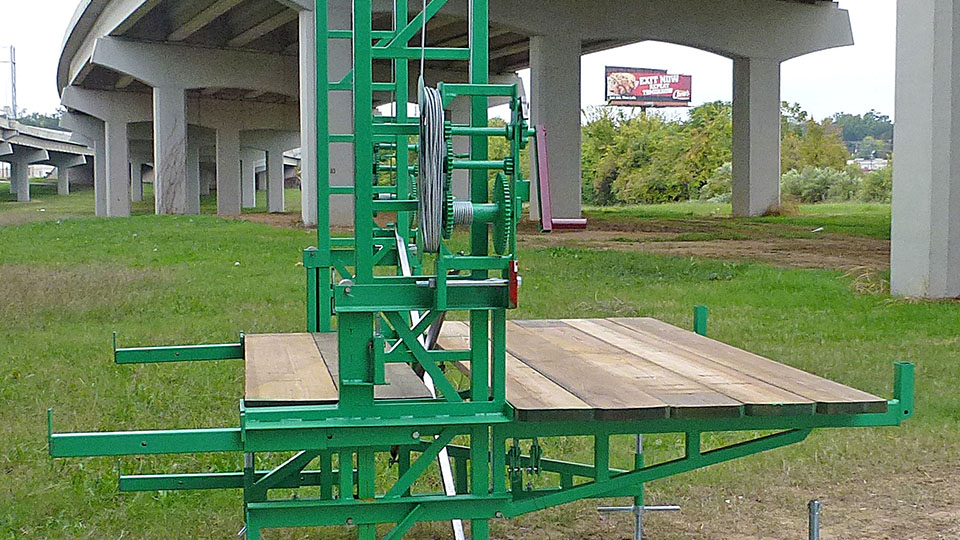
How it works inside tough spots
The usual configuration when using Non-Stop along a wall is to plank the upper level, which consists of the laborers’ platform and the bricklayers’ workbench (see the planked area in Photo 3), and two or three walk boards on the lower slide-out outrigger for the bricklayer.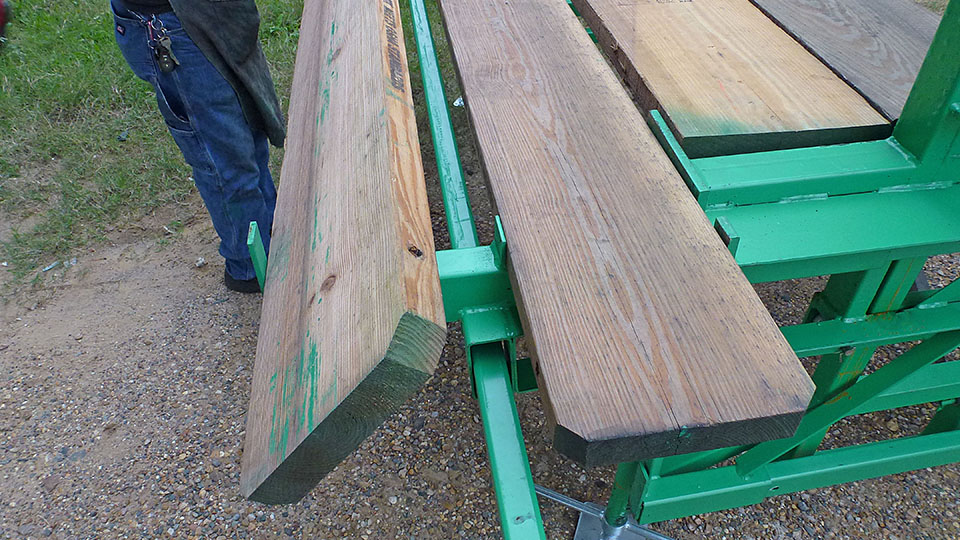
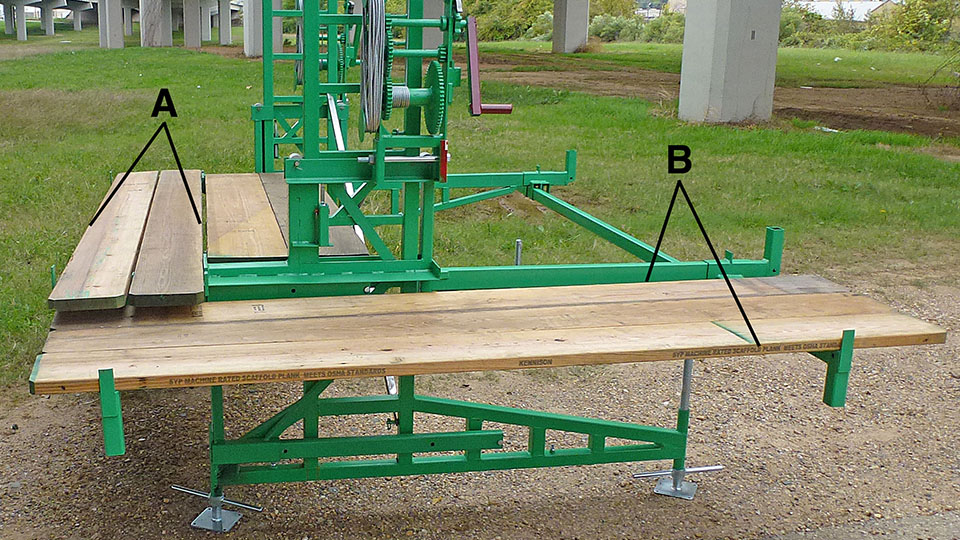
Originally published in Masonry magazine.
About the Author
Justin Breithaupt, Jr. is the owner of Non-Stop Scaffolding, Inc. He has been involved with elevating scaffolding and the masonry business since 1975, when his father invented a tower scaffolding system for their own masonry business. Visit www.nonstopscaffolding.com for more information on Non-Stop Scaffolding, Inc.











